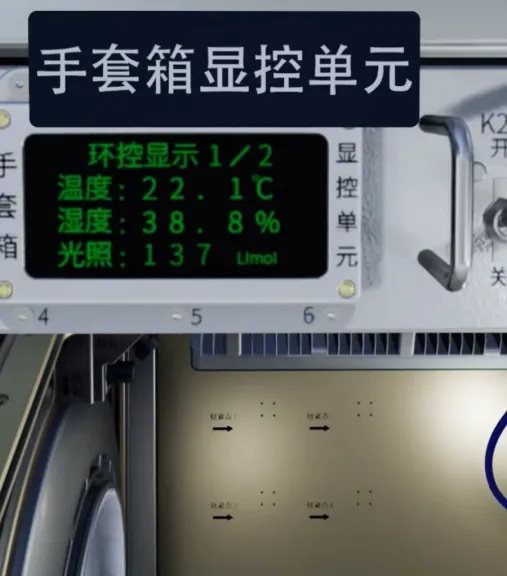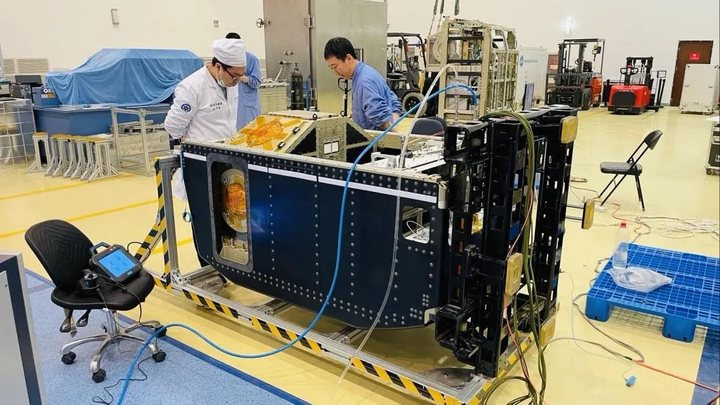With the successful landing of Chang’e 6 on the moon, the world has once again set off a space fever, and here we share with our buddies the scientific glove box, which is a very useful scientific research device both on the ground and in space.
The successful launch of the Questioning Heaven Experiment Module (QTEM) and its successful docking with the Tianhe Core Module (TCM) have sent many scientific experiment cabinets to the Tiangong Space Station to carry out experiments in space and thus solve the problems of space applications with large-scale, long-term manned care. Among these experiment cabinets, a visible, measurable, controllable, high-precision, replaceable scientific glove box was carried.
What is this glove box used for? How does it help space science research?
Not all gloves are qualified to go to heaven

The name “glove box” sounds a bit strange at first… a coat closet is for clothes, but a glove box is for gloves? What do astronauts use so many gloves for in the space station?
In the various experiment cabinets of the Questioning Heaven Experiment Module (QTEM), all kinds of experiment modules that have been delicately designed and manufactured are carried. If you touch them with your hands in the process of doing experiments, you may not only pollute the experimental instruments, but also cause changes in the experimental parameters, destroying the scientific nature of the experiments.
Therefore, the experiment module must be isolated from the air in the space station, the device used to isolate the experiment module is what we call the glove box. There are four special gloves on the glove box for the astronauts to carry out the operations in the glove box. The visual window and detection equipment on the box, on the other hand, allows the astronauts to implement to see the changes in the state of the box, to provide data support for the conduct of experiments.
The glove box does have gloves, but not the ordinary gloves we usually contact. What is special about these heavenly gloves?
First of all, all materials in spaceflight have very high requirements for flame retardancy, so the gloves must be made of materials that are not easy to burn. We see everyday gloves, whether cotton or chemical fiber, are very easy to burn, this one “sea” off the majority of candidates for gloves. In addition, in the case of conventional default scientific experiments, the astronauts are not able to use their hands to operate directly, which requires a high degree of tactile feeling of the gloves, and the flexibility of the operation is also a factor to be taken into account, so it is not easy to burn the metal material is basically out of the question. Finally, regardless of metal and non-metallic materials, to have a strong ability to inhibit the growth of mold, otherwise it will contaminate the glove box leading to experimental failure. Therefore, to develop a glove material that fully meets the above three conditions requires a lot of effort and time.
In addition, the glove box is designed with a special quick-change glove function so that the astronauts can change gloves while maintaining the isolation between the inside and outside of the glove box, thus preventing bi-directional contamination.
Robotic arm in the glove box

The glove box is also equipped with a dexterous robotic arm that can perform on-orbit high-precision scientific operations. It is oriented to the space-crossing scientific experiment platform for space biology, life science and aerospace medicine, which can provide an airtight and clean operation space for scientific experiments. This robotic arm can achieve an operating precision of 0.5 millimeters, and with this robotic arm, astronauts will be able to complete experimental operations more accurately.
The picture above is not the complete body of the robotic arm. In the glove box, there is also a microscopic operating system, which can complete the extraction and injection of cell nuclei and other very fine operations. The system can achieve an operating precision of 5 microns, which is one tenth of the diameter of a hair.
The mechanical arm is an extension of the astronaut’s arm, which replaces the astronaut’s hands and carries out experimental operations under the premise of ensuring that the astronaut does not touch the experimental device. It can be carried out in the box in bulk, such as picking and placing petri dishes; on-orbit cell-related research, such as microinjections, etc.; can also send out ultraviolet rays, the glove box sterilized, thoroughly and completely automatic cleaning.
The “hand” is open to the sky, the “eye” should also be open to the sky
Glove box on a large number of sensors, real-time recording of the glove box everywhere in the voltage signal, current signal, as well as temperature, humidity, light, wind and other information, reflecting the glove box or experimental device work status.
Interpreting this information may be beyond the scope of astronauts’ specialized knowledge and take up their working time. Therefore, all the sensor information on the glove box can be transmitted in real time to the ground laboratory, where ground scientists are responsible for interpreting and adjusting it, and commands can be issued from the ground to directly control the parameters of the glove box.


























